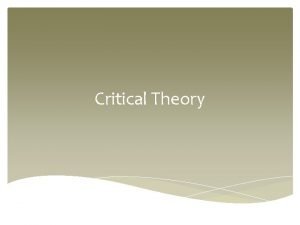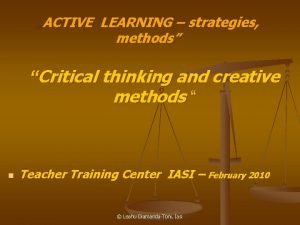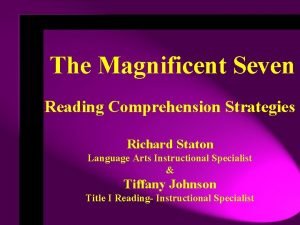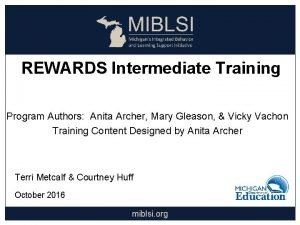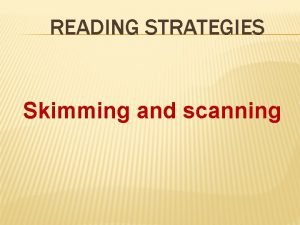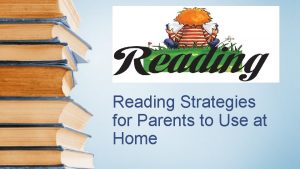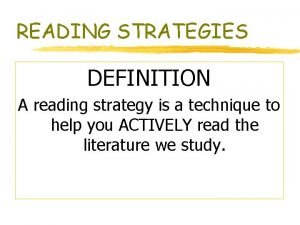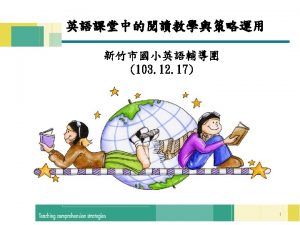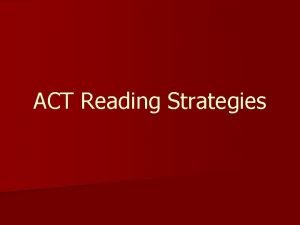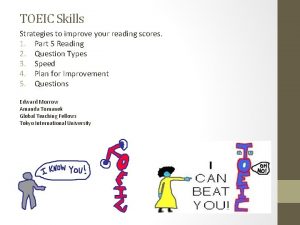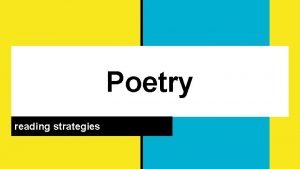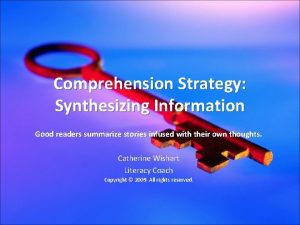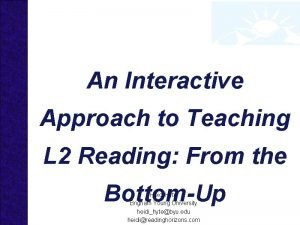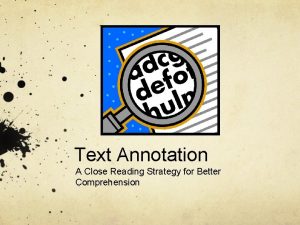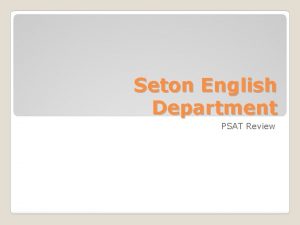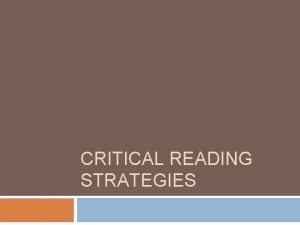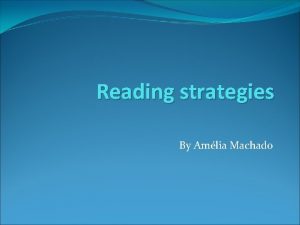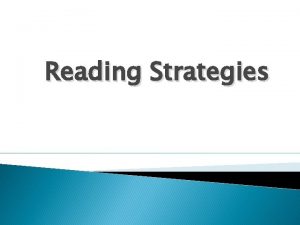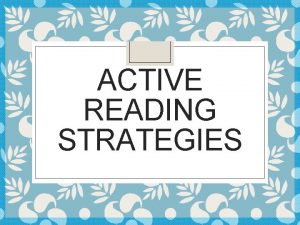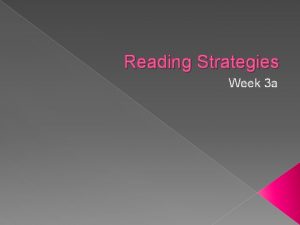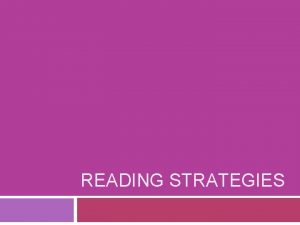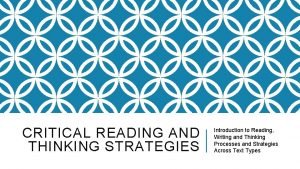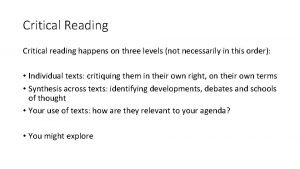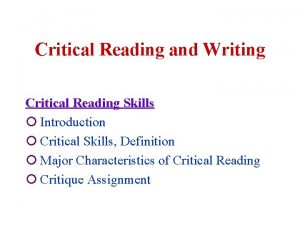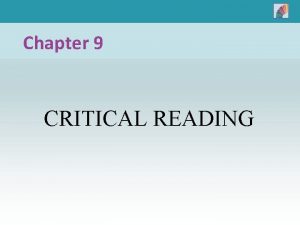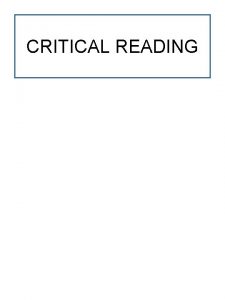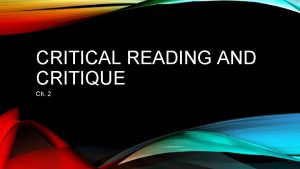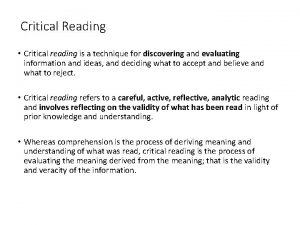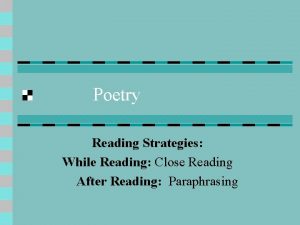Critical Theory Strategies for reading What is Critical
























- Slides: 24

Critical Theory Strategies for reading

What is Critical Theory? O Different ways of looking at text (think new lenses) O None is “more right” than another O Some stories can be viewed through many perspectives – even at the same time! O Multiple perspectives allow us to see texts in new light and think about them in different ways

Formalist Criticism O Formal elements of a work – language, structure, and tone O How do the parts connect to the whole O Modern Formalists – New Critics O “Just the facts ma’am” O Poetry lends itself nicely to this lens

Biographical Criticism O Author’s background aids in enriching themes, ideas, topics, etc. developed in a text O May not always reflect the author’s life, but it may give clarity or add richness to our reading of it

Historical Criticism O Four main types O Old Historicist O New Historicist O Marxist O Cultural

Old Historicist (Literary History) O Examine the “life and times” of the society in which it was written O Look for social currents/trends O Examine multiple perspectives of people during this time on this topic

New Historicist O History read in a modern context O Examine all facets of history – economical, sociological, anthropological, political

Marxist O Proletariat vs. Bourgeoisie O Struggles with: O Culture O Race O Class O Power

Cultural O Popular cultural influences O A combination of new historicism, psychology, gender, and deconstructionism O Looks at comics, TV shows, commercials, radio shows, etc.

Psychoanalytic Criticism O Sigmund Freud – psychoanalytic theory (unconscious mind) O Id – basic desires (repressed) O Superego – morals, codes, guilt O Ego – the arbitrator (how far should I go? ) O Oedipus/Electra Complex – competition with the father/mother (respectively) to take their place. O Uncover a character’s subconscious choices O Uncover the author’s unconscious meaning behind a text (or the reader’s)

Gender Criticism O Focus on how men and women are socially constructed in text O Includes: O LGBTQ+ Criticism O Feminist Criticism

Feminism O Places literature in a social context O Looks at the representation of women through what has been a traditionally male -dominated society

LGBTQ+ O Focuses on how homosexuals the non- binary/non-traditional gendered community are represented in text O Looks at how sexuality and gender are constructed in society

Archetypal Criticism O Archetypal critiques examine the hopes, fears, and expectations of cultures O Look for common human concerns in text O Archetypes – universal symbols that embody the basic human experience

Reader Response Criticism O Focuses on, you guessed it, the reader O Bring our own assumptions and expectations to a work – so what do we see?

Deconstructionist Criticism O Literary works do not yield fixed, single meanings O Language is too easily interpreted in various ways – therefore no right answer can be found O Find the ways to destabilize meanings

Let’s Practice O Cinderella – the Western Disney version O Pair up with a partner O You will be assigned a critical lens O Think of Cinderella with your assigned lens – what comes into focus as you consider the text through this lens?

O In a far away, long ago kingdom, Cinderella is living happily with her mother and father until her mother dies. Cinderella's father remarries a cold, cruel woman who has two daughters, Drizella and Anastasia. When the father dies, Cinderella's wicked stepmother turns her into a virtual servant in her own house. Meanwhile, across town in the castle, the King determines that his son the Prince should find a suitable bride and provide him with a required number of grandchildren. So the King invites every eligible maiden in the kingdom to a fancy dress ball, where his son will be able to choose his bride. Cinderella has no suitable party dress for a ball, but her friends the mice and the birds lend a hand in making her one, a dress the evil stepsisters immediately tear apart on the evening of the ball. At this point, enter the Fairy Godmother, who changes Cinderella’s pumpkin into a coach and provides her with a gown to attend the ball. After meeting the prince (at this point Cinderella is not aware it is him) and dancing all night, she loses track of time and races out of the ball as the clock strikes twelve and the magic spell breaks. Her glass slipper leads the duke on a hunt to find her, and with the help of her mice friends, she is able to try on her slipper and prove she is the girl with whom the prince danced. They get married and live happily ever after.

Application O You will be in two large groups O Each group will be given a story: Green Eggs and Ham or Where the Wild Things Are O You will choose one person to read the story aloud to the group O Then, you will develop a poster that charts at least FOUR critical lenses that can be applied to this story (use yesterday’s format as a model) O You will present this poster to the class and teach the critical theories using your text.

“The Story of an Hour” O Recall Kate Chopin’s “The Story of an Hour” O Fill in the chart for each of the different perspectives regarding this story – how can each lens be applied to this text? O The “Critical Strategies for Reading” chapter in Bedford (page 2091) can also help deepen your understanding of these perspectives.

“The Story of an Hour” O Choose a partner (must be pairs) O Choose a lens (first come, first served) O Go through the story carefully, and analyze the story through this lens O You will soon be in large groups Seminaring about the text and the lens you used to analyze it.

“The Story of an Hour” O Who are the characters? What are their relationships? Do any characters have symbolic representation – names, features, quotes, etc. ? O What is the major conflict and what type is it? How does the author illuminate this problem? O How do literary elements (figurative language, irony, imagery, symbols) develop the message? O What is theme that emerges in this text based on your responses to the questions above? Are these reinforced or altered when looking through the various lenses? Which lens is “most” appropriate to apply to this text? Why? (Each lens should share)

“The Story of an Hour” O On a piece of paper, respond to the following prompt: Using a theme your group developed for “The Story of an Hour, ” write a thesis and a core paragraph that argues this theme is present, and support it using at least ONE literary element. Use quotes to prove the element is present and functions as you claim.

“The Story of an Hour” For many people, marriage proves a societal requirement, which cages both partners. This idea is explored in Kate Chopin’s text “The Story of an Hour. ” Chopin illuminates the epiphanous awakening that people discover when released from an unrecognized entrapment. She brings the reader to this realization through her use of imagery. Chopin subtly weaves imagery throughout the text to demonstrate Mrs. Mallard’s new feeling of freedom. She begins, bringing the reader to this realization before Mrs. Mallard, as she indicates in the text, “There stood facing the open window, a comfortable, roomy armchair. Into this she sank, pressed down by a physical exhaustion…” (paragraph 4). While Mrs. Mallard is clearly still reeling from the news of her husband’s death, Chopin directs our attention to the “open window, ” which allows for descriptive detail, but it also symbolizes the approaching freedom Louise will soon come to recognize.
 Critical semi critical and non critical instruments
Critical semi critical and non critical instruments Spaulding classification system
Spaulding classification system Critical reading active
Critical reading active Pre reading while reading and post reading activities
Pre reading while reading and post reading activities Critical theory in criminology
Critical theory in criminology Active learning strategies to promote critical thinking
Active learning strategies to promote critical thinking Active learning strategies to promote critical thinking
Active learning strategies to promote critical thinking 7 reading comprehension strategies
7 reading comprehension strategies Anita archer rewards
Anita archer rewards What is scannig
What is scannig Reading strategies for parents to use at home
Reading strategies for parents to use at home Define reading strategy
Define reading strategy 2 types of reading
2 types of reading Six reading strategies
Six reading strategies What is absolute language in reading
What is absolute language in reading Ineffictive
Ineffictive What are the six active reading strategies
What are the six active reading strategies Act reading strategies
Act reading strategies Taking the toeic skills and strategies 1
Taking the toeic skills and strategies 1 Poetry reading strategies
Poetry reading strategies Reading strategies synthesizing
Reading strategies synthesizing Top down reading approach
Top down reading approach What is text annotation
What is text annotation Psat reading strategies
Psat reading strategies Definition of guided reading
Definition of guided reading




